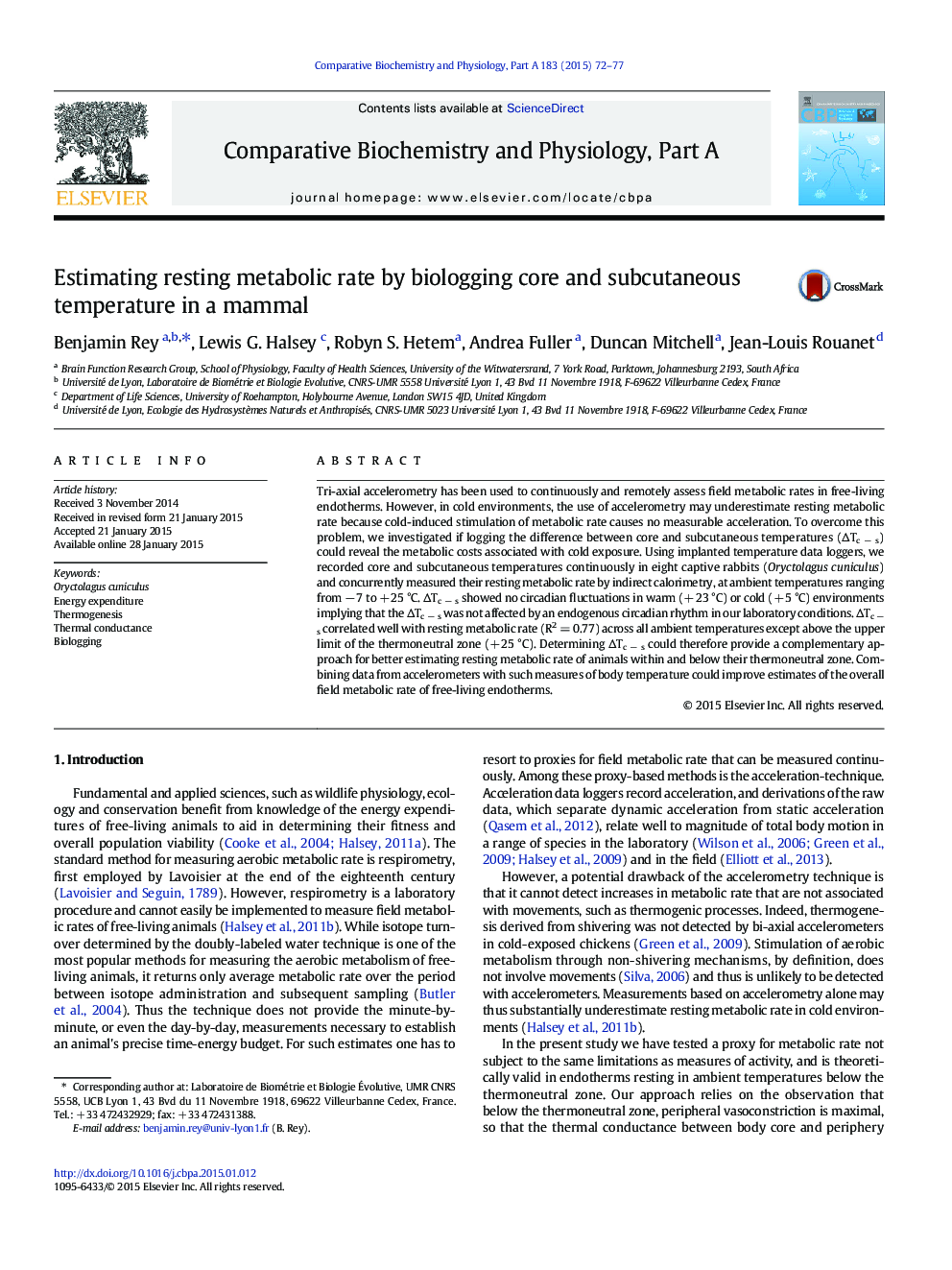| Article ID | Journal | Published Year | Pages | File Type |
|---|---|---|---|---|
| 1972066 | Comparative Biochemistry and Physiology Part A: Molecular & Integrative Physiology | 2015 | 6 Pages |
Tri-axial accelerometry has been used to continuously and remotely assess field metabolic rates in free-living endotherms. However, in cold environments, the use of accelerometry may underestimate resting metabolic rate because cold-induced stimulation of metabolic rate causes no measurable acceleration. To overcome this problem, we investigated if logging the difference between core and subcutaneous temperatures (ΔTc − s) could reveal the metabolic costs associated with cold exposure. Using implanted temperature data loggers, we recorded core and subcutaneous temperatures continuously in eight captive rabbits (Oryctolagus cuniculus) and concurrently measured their resting metabolic rate by indirect calorimetry, at ambient temperatures ranging from − 7 to + 25 °C. ΔTc − s showed no circadian fluctuations in warm (+ 23 °C) or cold (+ 5 °C) environments implying that the ΔTc − s was not affected by an endogenous circadian rhythm in our laboratory conditions. ΔTc − s correlated well with resting metabolic rate (R2 = 0.77) across all ambient temperatures except above the upper limit of the thermoneutral zone (+ 25 °C). Determining ΔTc − s could therefore provide a complementary approach for better estimating resting metabolic rate of animals within and below their thermoneutral zone. Combining data from accelerometers with such measures of body temperature could improve estimates of the overall field metabolic rate of free-living endotherms.
